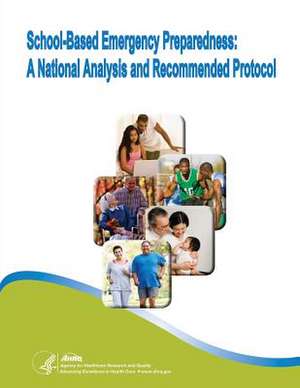School-Based Emergency Preparedness
Autor U. S. Department of Heal Human Services, Agency for Healthcare Resea And Qualityen Limba Engleză Paperback
Preț: 102.56 lei
Preț vechi: 107.96 lei
-5% Nou
Puncte Express: 154
Preț estimativ în valută:
19.63€ • 21.33$ • 16.50£
19.63€ • 21.33$ • 16.50£
Carte disponibilă
Livrare economică 31 martie-14 aprilie
Preluare comenzi: 021 569.72.76
Specificații
ISBN-13: 9781499671902
ISBN-10: 1499671903
Pagini: 58
Dimensiuni: 216 x 279 x 3 mm
Greutate: 0.16 kg
Editura: CREATESPACE
ISBN-10: 1499671903
Pagini: 58
Dimensiuni: 216 x 279 x 3 mm
Greutate: 0.16 kg
Editura: CREATESPACE
